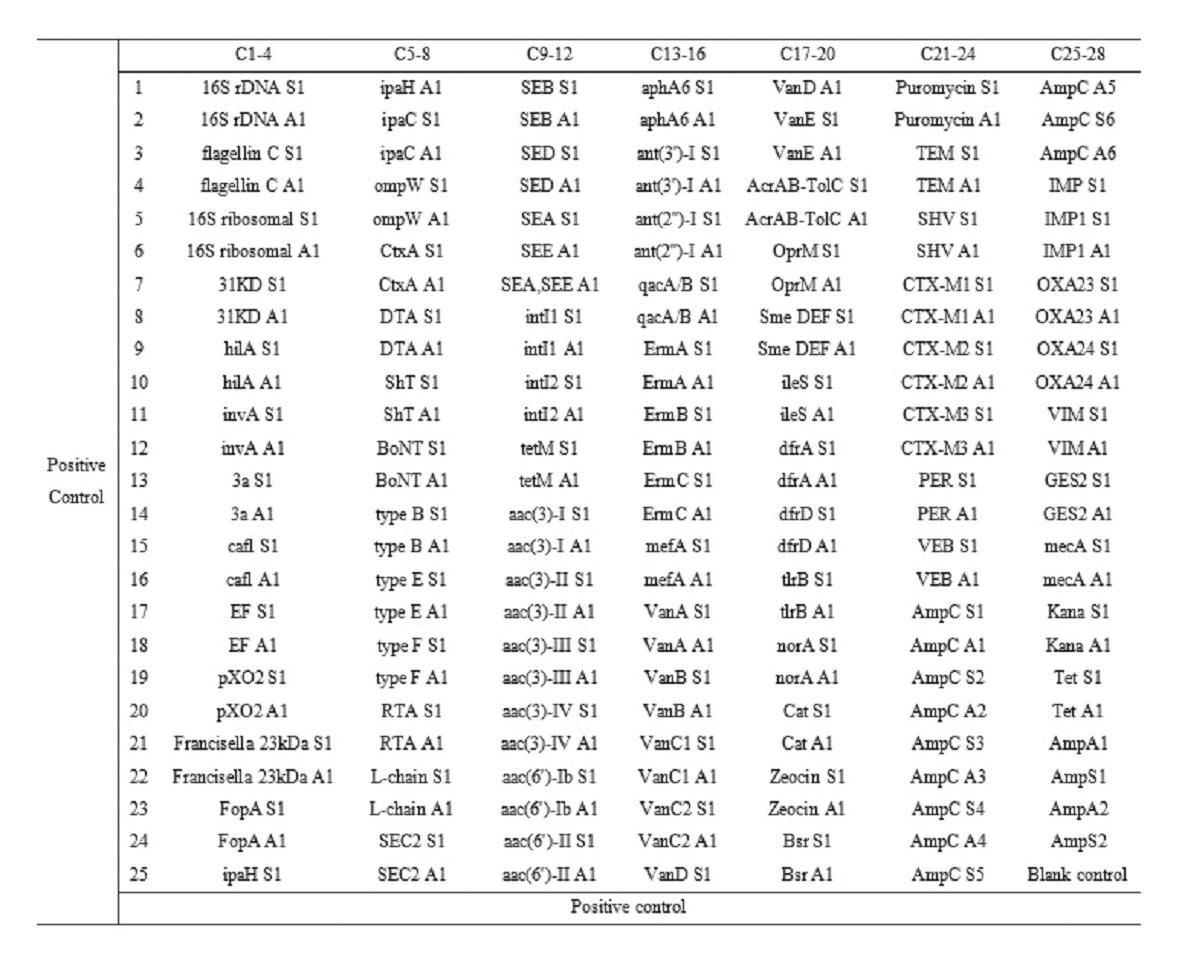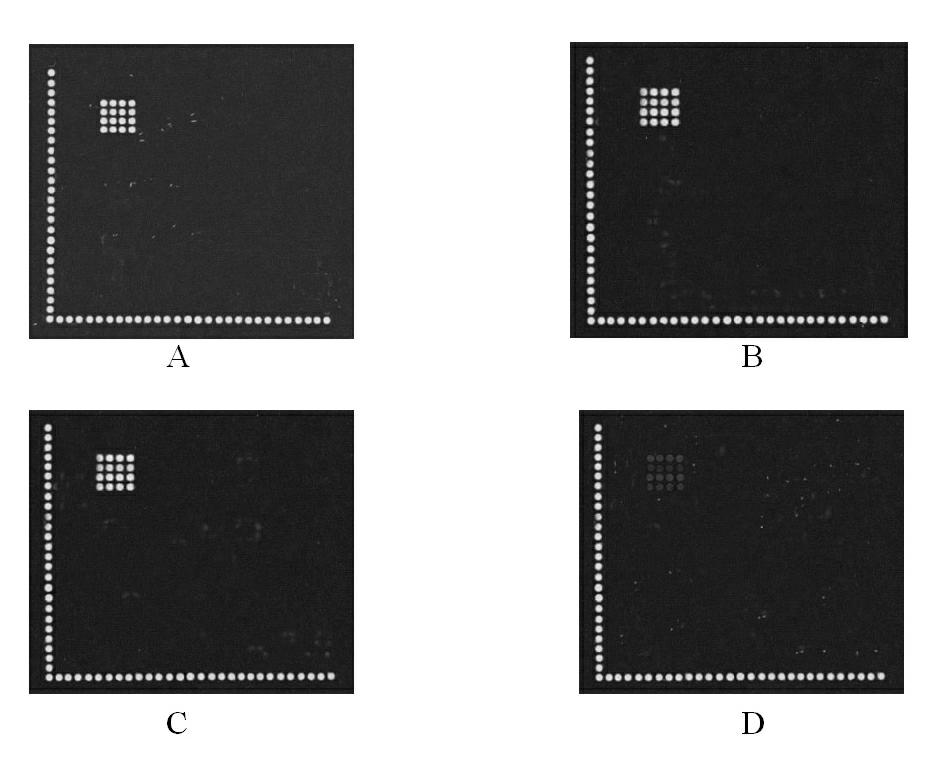Gene chip for high-flux detection of pathogens and application thereof
A technology for detecting gene chips and pathogens, applied in the determination/inspection of microorganisms, resistance to vector-borne diseases, DNA/RNA fragments, etc.
- Summary
- Abstract
- Description
- Claims
- Application Information
AI Technical Summary
Problems solved by technology
Method used
Image
Examples
Embodiment 1
[0511] Example 1. Detection of Vibrio cholerae by gene chip for high-throughput detection of pathogens
[0512] Cholera is an acute intestinal infectious disease caused by Vibrio cholerae of O1 and O139 serogroups. It is characterized by acute onset, rapid spread, wide spread, and the ability to cause a pandemic; O157:H7 is a new type that can produce Enteropathogenic bacteria with toxins very similar to toxin cords. Gene chips were prepared with synthetic gene probes to detect Vibrio cholerae O157:H7.
[0513] 1. Extraction and labeling of sample nucleic acid
[0514] Dilute the bacteria doubly and measure the concentration as 10 4 Bacteria / ml, 10 3 Bacteria / ml, 5×10 2 Bacteria / ml, 10 2 Bacteria / ml, take 200ul each, use the Bacterial Genomic DNA Extraction kit kit, and extract DNA according to the instructions. Take 0.6ul as a template for whole genome amplification and klenow fragment random primer labeling, the reaction system is as follows:
[0515] Whole Genome...
Embodiment 2
[0534] Example 2, Pathogen High-throughput Detection Gene Chip Simultaneously Detects Four Kinds of Microorganisms
[0535] Infectious diseases caused by pathogenic bacteria not only rank first in terms of morbidity, but are also an important cause of human death. With the continuous emergence of emerging infectious disease pathogens, recombinant pathogens and unknown pathogens, it poses a major threat to human health. Compared with traditional detection methods, gene chips have unique advantages in the detection of infectious diseases. In this experiment, a gene chip for high-throughput detection of pathogens was established, and the detection conditions of the chip were optimized. Samples were tested.
[0536] 1. Chip Preparation
[0537] A silanized glass slide was selected as the chip carrier, soaked in 5% glutaraldehyde for 50 min, ultrasonically cleaned twice with ddH2O, and placed in a dry place for later use.
[0538] The synthesized 173 probes were dissolve...
Embodiment 3
[0545] Example 3. Gene chips for high-throughput detection of pathogens simultaneously detect five drug-resistant gene-resistant strains
[0546] In recent decades, with the widespread and unreasonable use of broad-spectrum antibiotics in public health and animal husbandry, severe bacterial resistance can be caused, treatment is difficult, and the mortality rate is high. Rapid, accurate, and high-throughput detection of drug resistance genes is the key to the prevention and control of infectious diseases. We have established a bacterial resistance gene detection chip, which can detect Escherichia coli DH5α containing kanamycin resistance gene plasmid, Escherichia coli DH5α containing chloramphenicol resistance gene plasmid, Escherichia coli containing bleomycin resistance gene plasmid DH5α and some samples of Escherichia coli DH5α containing tetracycline resistance gene plasmid were detected and compared.
[0547] 1. Bacterial whole genome extraction and labeling
[0548...
PUM
| Property | Measurement | Unit |
|---|---|---|
| molecular weight | aaaaa | aaaaa |
Abstract
Description
Claims
Application Information
 Login to View More
Login to View More - R&D
- Intellectual Property
- Life Sciences
- Materials
- Tech Scout
- Unparalleled Data Quality
- Higher Quality Content
- 60% Fewer Hallucinations
Browse by: Latest US Patents, China's latest patents, Technical Efficacy Thesaurus, Application Domain, Technology Topic, Popular Technical Reports.
© 2025 PatSnap. All rights reserved.Legal|Privacy policy|Modern Slavery Act Transparency Statement|Sitemap|About US| Contact US: help@patsnap.com



